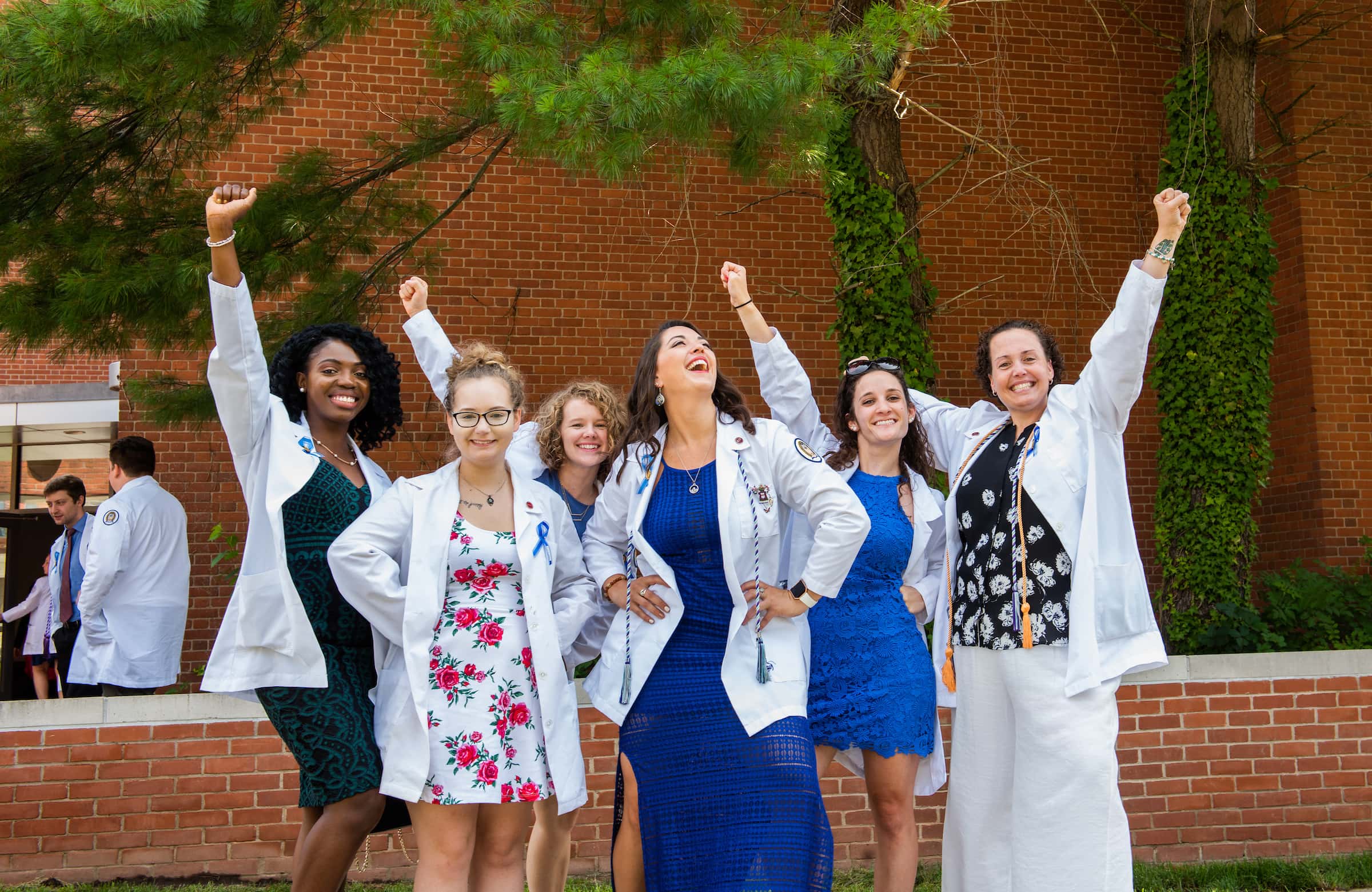Southern Connecticut State University’s nursing program hit the half century mark this year, and the future looks exceptionally bright. The program has maintained its commitment to nurse education and excellence – its pass rates are near perfect – and can now add expansion to its roster, as the university will soon break ground on a building that will serve the Nursing Department and other health-related programs.
Nursing alumni, faculty, students, and university officials will have the chance to come together to celebrate this week at “50 Years of Nursing Excellence – Looking Back as We Look Forward.” Dr. Leslie Mancuso, ’78, PhD, RN, FAAN, president and chief executive officer of Jhpiego, an international nonprofit health organization affiliated with Johns Hopkins University, is the keynote speaker.
“It is a true milestone,” said Lisa Rebeschi, BS ‘84, and MS ‘91, former associate professor and chair of the Nursing Department.* “[In 1969] we started with just 13 students. The difference we are making to state healthcare field and in nurse education is drastically different than it was 50 years ago. Certainly, we’ve come a long way.”
One of the staples of the program, since inception, has been its quality of excellence.
“The Nursing Department takes great pride in the quality of education that they provide,” said Dr. Sandra Bulmer, dean of the College of Health and Human Services at Southern. “Students are both going to be prepared to practice nursing on day one and be able to pass the NCLEX-RN, the National Council Licensure Examination, on the first try. Consistent accreditation is another marker of the high quality.”
Growth and evolution have played key roles in the program’s success as well. When the nursing program was established in 1969, it consisted of a traditional four-year bachelor’s degree program. The program now includes a bachelor’s degree program with two admission pathways, an accelerated career entry (ACE) program for those with a BS or BA in another discipline, and an RN-to-BS completion program.
In 1985, Southern added graduate MSN programs that allow students to choose from one of three tracks: Nursing Education, Family Nurse Practitioner, and Clinical Nurse Leader; students who already have an MSN can enter certificate programs in any of these three areas. And in fall 2012, Southern added an EdD in nursing education in collaboration with Western Connecticut State University. It’s one of the few doctoral programs in nursing education in the United States.
Across the board, pass rates for programs are stellar: The NCLEX-RN first-time pass rate for the 2018 graduates from the traditional program was 100 percent. The NCLEX-RN first-time pass rate of 2018 graduates from the ACE program was 97 percent. Ninety-two percent of MSN graduates passed their FNP (family nurse practitioner) certification exam on their first attempt.
“The range of degrees is across the spectrum,” Bulmer said. “Our interdisciplinary curriculum is developed to be the core in innovation in the way we educate; we train our own nurse educators to go out and train.” Added Rebeschi, “We literally train from bedside to practitioner.”
More growth looms on the horizon: Southern is about to break ground on a new building that will serve the Nursing Department. The building will feature increased, dedicated space for practice-based learning, lab rooms for hands-on instruction, and a simulation center.
“There will be one high-fidelity lab with computerized high-tech mannequins, known as Sim Man, and video capture,” Bulmer said. “It mimics the floor of a hospital with a medical station and nursing station, and different patient rooms. Students will encounter real-life situations. Students will be debriefed, which gives them the opportunity to see what they’re doing right and wrong. It’s a highly effective way to train.”
In addition to the high-tech Sim Man — some of these mannequins talk and can even give birth — the program will use patient actors, guided by scripts, in realistic “doctor’s rooms” and a home simulation room that will mimic home visits.
Of course, growth comes with a price tag. Technology is expensive, as is the manpower to manage it. Opportunities for clinical sites, which are heavily supervised and monitored, are taxed as well. But the program’s 50-year evolution always has been guided by keeping a close ear to the needs of the local healthcare system, so the program will keep doing what it’s been doing all along: innovate.
“Southern is a leader in preparing the next generation of academic nurse educators,” said Cheryl Resha, chairperson and professor, Nursing Department. “We have accomplished and talented faculty who have authored books, chapters, articles in peer-reviewed journals, and practice guidelines. SCSU’s faculty is dedicated to evidence-based practice and is committed to ensuring students are educated on the most up-to-date evidence.”
Bulmer added, “Everyone does a great job training nurses in Connecticut, but we provide access and opportunity and produce a workforce that’s diverse. There’s a need for nurses of color and doctors and nurses of diverse income to serve their counterparts. We want to help healthcare diversify its workforce and to grow our capacity to serve students and Connecticut.”
“The future,” Bulmer said, “is incredible.”
*Rebeschi is currently Associate Dean, School of Nursing, Quinnipiac University.


